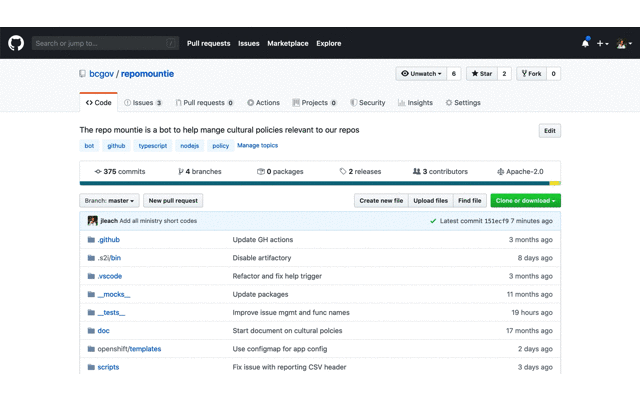This application is built using Bootstrap, Leaflet, D3, and React.
The purpose of each component is described in the source files, but a basic familiarity with React is essential. The Quick Start guide is very good.
The deployed prototype app can be viewed at http://plotandscatter.com/bcic-data-challenge/.
NB. These instructions have not been tested on Windows.
- Clone the repository.
- In the root project folder, run
npm install. - Once npm finishes, run
npm run compile-vendorsto generate the DLL. The DLL contains dependencies that are static (e.g.reactitself) and so don't need to be rebuilt every time the dev server starts. This improves local webpack performance. You don't need to build the DLL again unless you add additional static dependencies tosrc/vendors.js. - Once the DLL has been built, run
npm run dev.
View the app at http://localhost:3000 in your browser. Note that this assumes that there is a production instance somewhere serving the regional vector tiles. If not, follow the instructions below under "Serving the regional vector tiles" to set up a tile server on your local machine.
The various shape files representing the regional boundaries at different aggregation levels (e.g. census division, census area, economic region) have been converted to GeoJSON. In the steps below, tippecanoe is used to convert the GeoJSON to the MBTiles vector tile format. Compared to serving and rendering the GeoJSON directly, the tile format offers extremely good performance while retaining fine boundary details even at high zoom levels. A third-party Docker container, running concurrently with the main app, is responsible for serving the vector tiles.
- Homebrew
- Docker for Mac
- tippecanoe: from a Terminal, run
brew install tippecanoeonce Homebrew is installed
These instructions may vary depending on the Linux distribution. The following has been tested on Ubuntu 14.04.
- Docker for Ubuntu
- tippecanoe: follow the instructions in this GitHub issue thread
-
From your root project directory,
cd src/data/boundaries/ -
Check the
geo-jsonsubfolder, and unzip any files found there -
Then run the following commands from the
src/data/boundaries/folder, one at a time (each might take a few minutes):tippecanoe -o ./vector-tiles/municipalities.mbtiles ./geo-json/Municipalities_geo.json --no-polygon-splitting tippecanoe -o ./vector-tiles/econregions.mbtiles ./geo-json/EconRegions_geo.json --no-polygon-splitting tippecanoe -o ./vector-tiles/regdistricts.mbtiles ./geo-json/RegDistricts_geo.json --no-polygon-splitting tippecanoe -o ./vector-tiles/census-dissemination-areas.mbtiles ./geo-json/DisseminationAreas_clipped.json --no-polygon-splitting tippecanoe -o ./vector-tiles/census-dissemination-blocks.mbtiles ./geo-json/DisseminationBlocks_clipped.json --no-polygon-splitting tippecanoe -o ./vector-tiles/census-tracts.mbtiles ./geo-json/CensusTracts_geo.json --no-polygon-splitting
- From the same folder as in the previous step (
src/data/boundaries), run the following command:docker run -v $(pwd):/data -p 8080:80 klokantech/tileserver-gl --config vector-tiles/tileserver-gl-config.json - This may take a few minutes to do a one-time install of the
tileserver-gldocker image - Once you see the message
Listening at http://:::80/, the tiles are available for use in the app; you can browse the tile server athttp://yourdomain.com:8080(or, if deployed locally,http://localhost:80) - NB Ensure you update the URLs in the
Constants.MAP_BOUNDARY_INFOvariable, found insrc/constants.js
Adapted from https://nodejs.org/en/docs/guides/nodejs-docker-webapp/.
- Make sure Docker is installed on your computer (https://www.docker.com/products/docker)
- In Terminal, navigate to the root of this project
- Build the Docker image:
docker build -t plotandscatter/ps-bcic-data-viz . - Once the Docker image is built, run it:
docker run -p 3001:3000 -d plotandscatter/ps-bcic-data-viz
You should now be able to access the Docker server at http://yourdomain.com:3001 (or http://localhost:3001 if running locally).
docker ps- Find the container ID for the image 'plotandscatter/ps-bcic-data-viz'
docker kill <container-id>
Adapted from http://blog.yohanliyanage.com/2015/05/docker-clean-up-after-yourself/ and http://stackoverflow.com/questions/30604846/docker-error-no-space-left-on-device.
docker ps -a
Then manually use docker rm containerid or docker rmi image as appropriate for stopped/dangling images.
docker rmi $(docker images -f "dangling=true" -q) (if using sudo, sudo docker rmi $(sudo docker images -f "dangling=true" -q))
docker rmi $(docker images | grep "^<none>" | awk "{print $3}")



